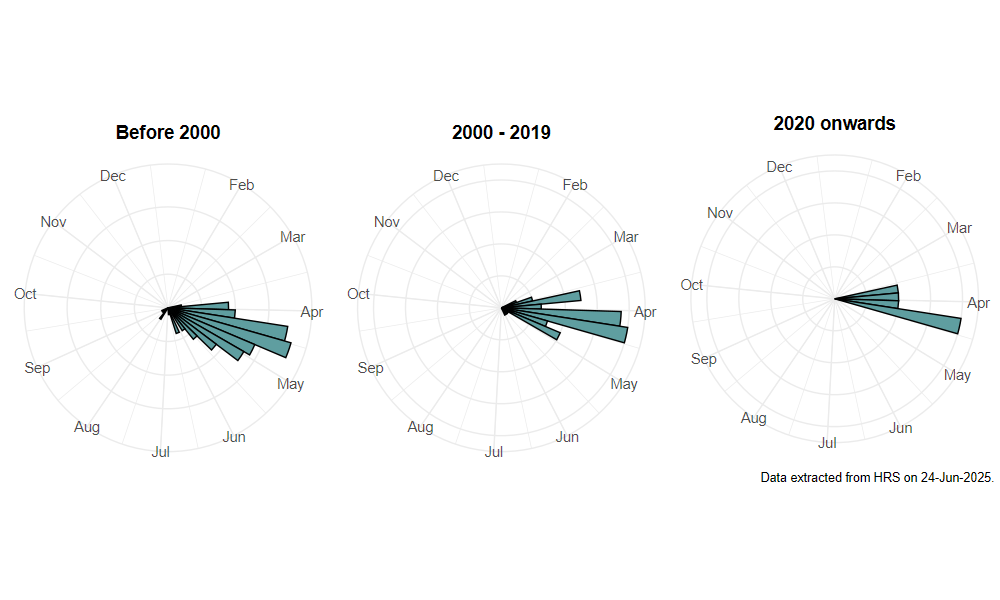Platycheirus discimanus Loew, 1871
Identification
Identification difficulty = 3. ![]()
![]() according to Ball & Morris, 20241
according to Ball & Morris, 20241
Biology
Larva unknown. Usually found around spring blossom, especially Blackthorn Prunus spinosa and sallows Salix sp., in sheltered situations such as woodland edges (both deciduous and coniferous) and hedgerows. Adults can be found visiting the flowers, or resting in the immediate vicinity of flowering bushes where they sun themselves on dead grass tussocks, etc.
Flight period
The following plots show the number of unique records per week excluding those reported to be of immature stages.

Status
Lower Risk (Nationally scarce) - Ball & Moris, 20142 Notable - Falk, 19913.
Distribution
This species may well be overlooked because of its early flight period and its resemblance to the very common P. albimanus, which occurs in similar situations. Records are scarce, but widely scattered. Although they tend to be concentrated towards the lowlands of southern England, there are records from upland localities in northern England and Scotland.

Trends
The following plots show the Frescalo TFactor vs year and a map of the rescaled frequency (all records) for the species.
-
Ball, S., & Morris, R. (2024). Hoverflies of Britain and Ireland. WILDGuides (3rd ed.). Oxford: Princeton University Press. ↩
-
Ball, S., & Morris, R. (2014). A review of the scarce and threatened flies of Great Britain. Part 6: Syrphidae. ( No. 9). Species status (pp. 1–130). Peterborough: JNCC. ↩
-
Falk, S. (1991). A review of the scarce and threatened flies of Great Britain. ( No. 39). Research and Survey in Nature Conservation (pp. 1–194). Peterborough: NCC. ↩